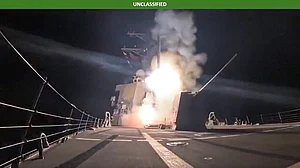As New Delhi and Beijing revive dialogue and reject third-party mediation, Washington’s strategic assumptions in Asia face a challenge
- HOME
- International
International
Other International Stories
Advertisement
Advertisement
Advertisement
×
As New Delhi and Beijing revive dialogue and reject third-party mediation, Washington’s strategic assumptions in Asia face a challenge
BY Atul Chandra




